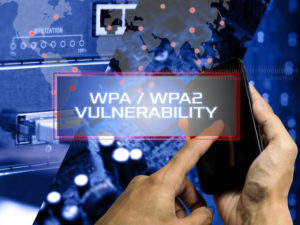
Due to potential cybersecurity threats, experts have been advocating a password circuit and wireless protocols to be brought between Wi-Fi routers and users’ systems so that their browsing data stands protected from hackers.
These protocols are released and controlled by an autonomous body called the Wi-Fi Alliance, and the organization’s latest protocol, WPA3, is said to be quite robust so that it’s harder for hackers to pierce users’ firewalls.
However, experts have stumbled upon a new way to compromise the Wi-Fi passwords of the earlier generation WPA/WPA2 protocols.
The Different Standards and the Vulnerability
One needs to understand two clear aspects here. One is the way the hackers used to break into Wi-Fi networks earlier and how the new technique is different from the previously observed ones.
The other aspect to be understood is the new improvements that the Wi-Fi Alliance has been able to incorporate in the handshake protocols that makes the new WPA3 protocol more reliable.
On the first issue, those engaged in studying the way the Wi-Fi networks were being breached would observe that the attacker would be waiting for the victim to log in to the Wi-Fi network and then effect the break-in to do damage. This was done around the four-way handshake called Extensible Authentication Protocol over LAN, or EAPoL.
In the newly detected hacking process, however, it is being seen that the hacker uses what is called a Robust Security Network Information Element, or RSN IE.
Another feature being touted is the Pairwise Master Key Identifier (PMKID) feature. This puts the millions of computers connected through the WPA/WPA2 protocol in trouble.
The team that detected this vulnerability stumbled upon it when they were testing out the possibilities of how the new protocol WPA3 could be cracked.
That brings this discussion around to the new WPA3 protocol and how it could take care of this weakness in the WPA/WPA2 protocol.
The attempt being made by the Wi-Fi Alliance this time is to explore the encryption route adopted by Virtual Private Networks.
The big difference has been brought about by Simultaneous Authentication of Equals (or SAE), which is considered the modern or improved key establishment.
Experts who have tested the new protocol confirm that the type of forced attack and entry into the system once connected and logged is no longer possible.
Take the Steps Essential to Upgrade

It is important to check with your service provider whether the router provided by them has been upgraded to the newly released protocol.
Realistically, it is not so new either; the update was first announced in January this year and was finally officially released earlier this summer.
You must insist on your service provider to confirm that your connection is running only on the latest protocol.
You will at least be spared the risk of being hacked for no fault of your own. On the other hand, if your Wi-Fi router is purchased at your end, do make it a point to get back to the manufacturer of the device and make sure the protocol update is performed on it, if it isn’t already in use.
They would normally have a customer service representative willing to guide you over the phone on how the update can be carried out at your end.
You should feel a lot more relaxed after that. It is however advisable to subscribe to a VPN service, particularly if the nature of your work over the internet calls for confidentiality.
